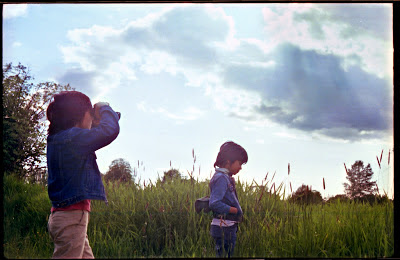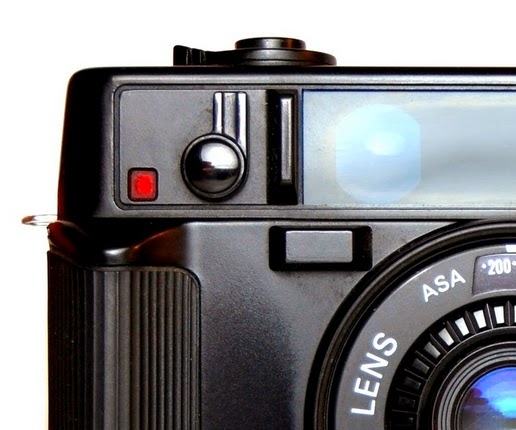Vancouver Camera Show find: my second Voigtlander Vito B
It's a bit of a bust.
As I rode home on the train, I opened the film door, cocked the shutter, and fired on B (bulb).
Looking through the usually wonderful 50mm f3.5 Color Skopar I noticed crazing or cracked glass near the edges. I hoped it was actually crazing, yellowing, or delamination of glues they use to assemble Tessar-formula lenses or maybe some dried lubricant and NOT actually cracked glass. But does it matter? It was way less than perfect. A lemon. A dud. In the end, the deal was too good to be true.
(Note, I don't blame the seller. It's always buyer beware.)
(Note, I don't blame the seller. It's always buyer beware.)
This evening, I was tempted to go into the lens assembly and see what was what. I thought maybe I could save the camera. I had cleared the table and had my tools out but stopped myself.
Let me say, before I go on, a Vito B is a brilliant camera. Really under appreciated because it can appear to be broken when you first look at it at the local thrift or camera show. The main reasons are Vito Bs are double stroke. You have to cock it twice to advance the film one frame (this may be why the camera is so compact).
ALSO, you have to have film in the camera to load the shutter spring. ie cock it. Or, you can open it up and roll the sprocket (not the winder spindle) but the toothy thing above the top film rail. It has to click TWICE to fully cock the shutter. (I suppose a picture would be useful.)
Let me say, before I go on, a Vito B is a brilliant camera. Really under appreciated because it can appear to be broken when you first look at it at the local thrift or camera show. The main reasons are Vito Bs are double stroke. You have to cock it twice to advance the film one frame (this may be why the camera is so compact).
ALSO, you have to have film in the camera to load the shutter spring. ie cock it. Or, you can open it up and roll the sprocket (not the winder spindle) but the toothy thing above the top film rail. It has to click TWICE to fully cock the shutter. (I suppose a picture would be useful.)
Because, lots of people don't know this, the camera can be sold as a broken item. I've bought a great one for $25 and it took one of my favourite images of my boys.
But I sold it. So when I saw this new Vito B on the table I snapped it up....and then I saw the gunky lens.
I started thinking about about vision and limitations. I wondered how this camera would see. The great thing about viewfinder cameras in general is you really don't know what you have until you develop the film. Vito Bs-even when they are mint and perfect by nature of their design (great lens on affordable, extremely compact body) just do their thing.
I started thinking about about vision and limitations. I wondered how this camera would see. The great thing about viewfinder cameras in general is you really don't know what you have until you develop the film. Vito Bs-even when they are mint and perfect by nature of their design (great lens on affordable, extremely compact body) just do their thing.
We often think of the photographer as the one who sees and envisions and captures. The camera is merely a conveyance for the photographic seeing. This is especially true in the digital age, when the shot, the image making, and the image viewing shares nearly the same moment.
But with this film camera I could not possibly know what it could see. Would it create flaring or softness at the edge? Would it be entirely out of focus? Whatever caused the cracks may have been violent enough to hold the whole lens assembly out of alignment.
This camera had its own sovereignty. It could take in the world only on its own terms. It could only take the picture the way it was able to.
I no longer had the full range of creative flexibility. It could only do what it was capable of doing. I was merely the conveyance of what was already there in the camera and lens. I felt I should surrender to the camera. Suddenly I wanted to load it and shoot it.
Of course, anyone can say stuff like this about any piece of sh*t gear.
But it reminded me how unique each camera is and how much personality and mystery an older piece of kit has.
It could never take a perfect picture but it could take one that completely surprises me.






Comments